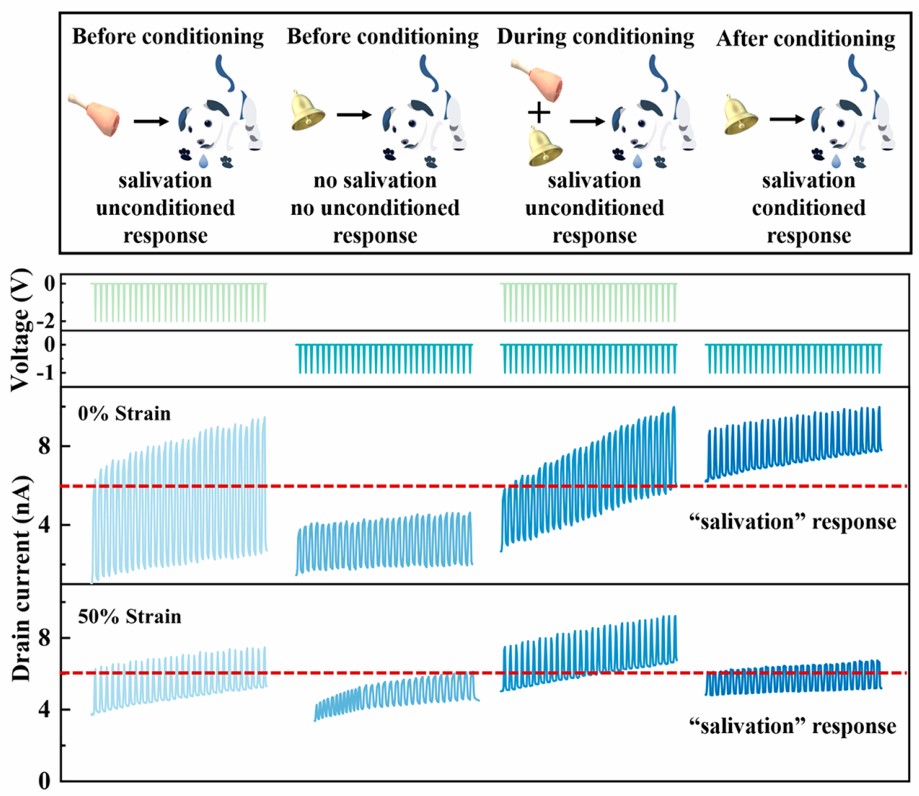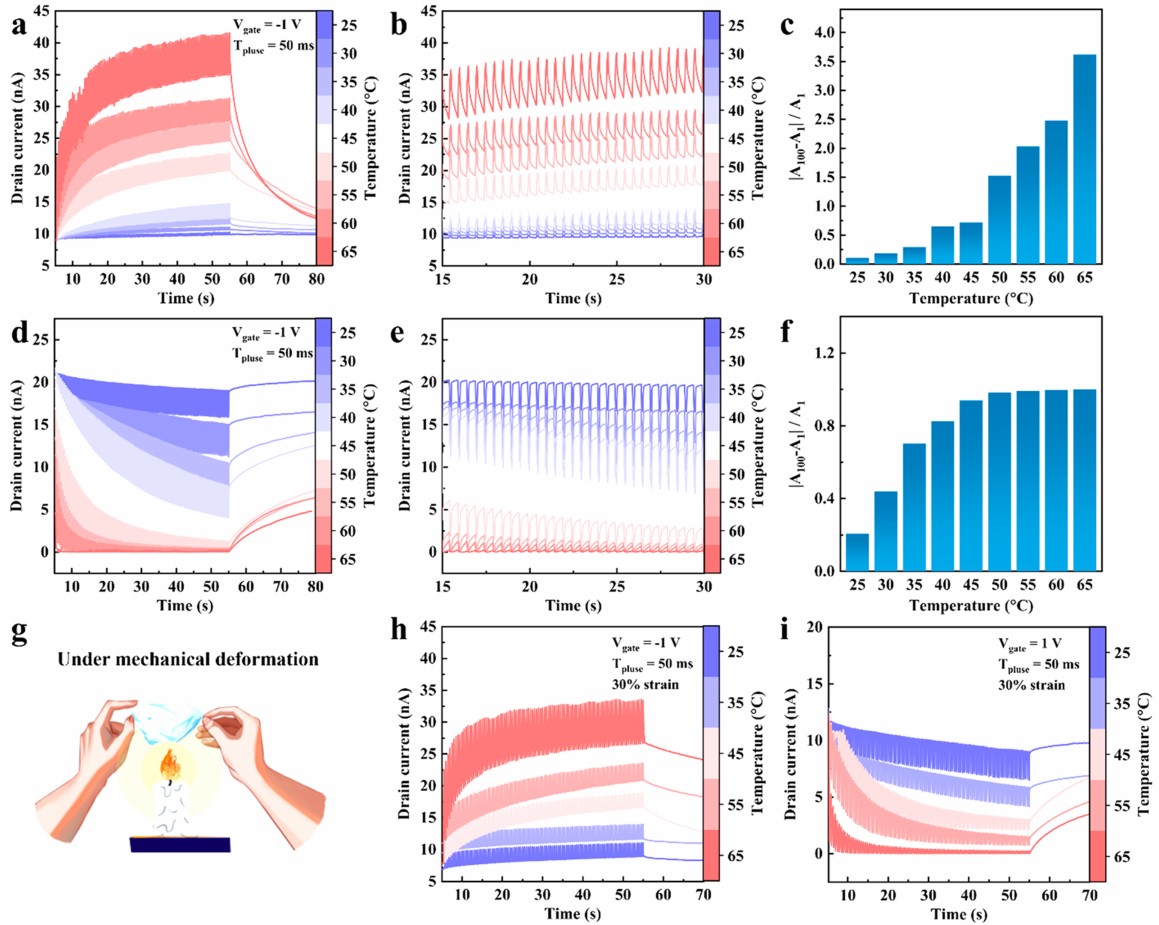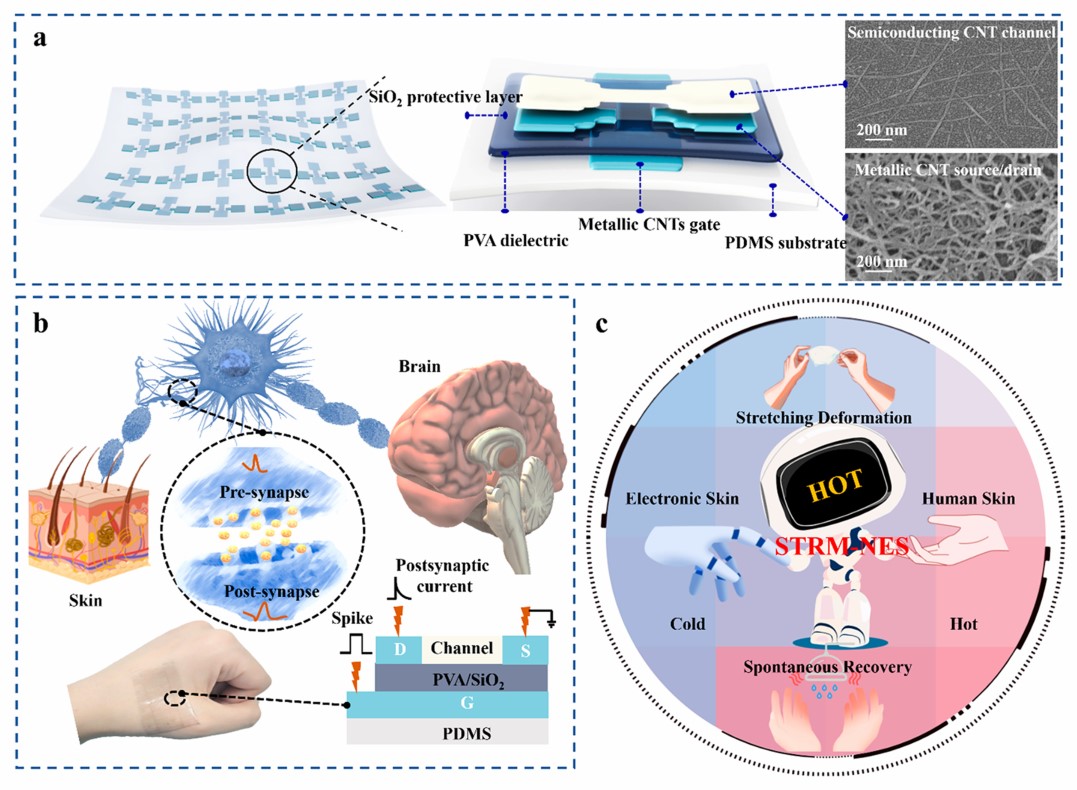Recently, Prof. Zhang Min and Wang Yarong published their research results entitled ” Stretchable Temperature-Responsive Multimodal Neuromorphic Electronic Skin with Spontaneous Synaptic Plasticity Recovery ” on ACS Nano (the SCI of zone 1 with IF =15.881) as the corresponding author and the first author respectively.
In this paper, we propose and implement a stretchable temperature-responsive multimodal neuromorphic electronic skin based on carbon nanotube channels and electrodes and PVA dielectric layer. The array can simultaneously or independently modulate the neuromorphic characteristics through temperature and tensile deformation, and integrate the functions of sensing, recognition, storage and self-healing. The STRM-NES enables efficient, highly sensitive, long-term monitoring and memory of changes in temperature or stress, and real-time in-situ monitoring of individual and external environmental information. In addition, the STRM-NES also has excellent self-healing ability and reusability, showing sensory, transmission, memory and self-healing properties similar to human skin, providing new possibilities for future applications such as wearable electronic devices, intelligent robots and skin prosthetics.
Multimodal electronic skin devices capable of detecting multimodal signals provide the possibility for health monitoring. Sensing and memory for temperature and deformation by human skin are of great significance for the perception and monitoring of physiological changes of the human body. Electronic skin is highly expected to have similar functions as human skin. Here, by implementing intrinsically stretchable neuromorphic transistors with mechanoreceptors and thermoreceptors in an array, we have realized stretchable temperature-responsive multimodal neuromorphic electronic skin (STRM-NES) with both sensory and memory functions, in which synaptic plasticity can be modulated by multiple modalities, in situ temperature variations, and stretching deformations. Temperature-responsive functions, spontaneous recovery, and temperature-dependent multitrial learning are proposed. Furthermore, a stretchable temperature neuromorphic array composed of multiple fully functional subcells is demonstrated to identify temperature distributions and variations at different regions and conditions after various strains of skin. The STRM-NES has temperature- and strain-responsive neuromorphic functions, excellent self-healing, and reusable capability, showing similar abilities as human skin to sense, transmit, memory, and recovery from external stimuli. It is expected to facilitate the development of wearable electronics, intelligent robotics, and prosthetic applications.
The article links:


